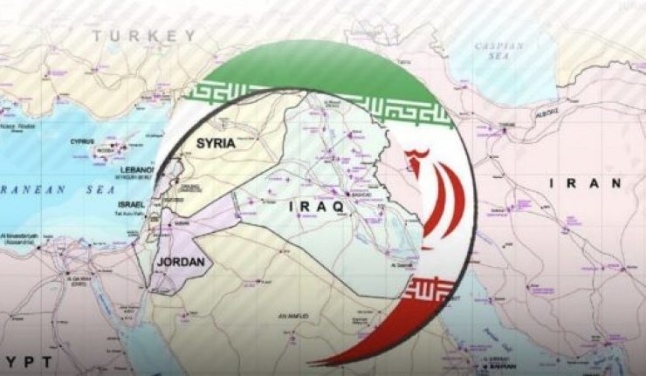
Iran, Iraq and now Lebanon
There is never a shortage of crises in the Middle East. As if there wasn’t enough trouble in the region, now Lebanon is going through popular protests against the existing political order.
I will come to that later. First, we have the smoldering US-Iran crisis, which might, at any time, get out of hand to become a full-fledged conflict.
The US’s killing of Iranian general Qassem Soleimani led to Iranian retaliation with a missile attack on two Iraqi bases hosting US forces. This led to some US soldiers injured, though no fatality was reported.
Even as Iran was feeling self-satisfied with its revenge attack, it found itself under international pressure over the accidental downing of a Ukrainian plane, carrying 176 passengers of different nationalities. Having failed initially to blame this on the mechanical failure, it had no choice but to accept that a rogue missile, it had fired, was responsible for the tragedy. The video imagery was there for all to see.
Iran’s military commander expressed contrition; wishing that he would have liked to be its casualty. It was made clear that Iran would cooperate with an international investigation of the tragic incident.
However, during his Friday prayer gathering, Iran’s supreme leader, Ali Khameini, was much more assertive; trying to direct the blame to the US for creating tensions in the region, after withdrawing from the 2015 nuclear agreement and targeting the Iranian general.
In other words, Iran is in no mood to surrender. And it is not inconceivable that the situation might get worse.
Iran is no longer committed to the 2015 nuclear agreement, already torn by the US. It is unhappy that European countries, which didn’t go along with Trump’s initial dumping of the nuclear deal, now seem keen for a renegotiated deal to not only curb/stop Iran’s nuclear program but also to push back its regional role.
The Trump administration hopes that Iran’s worsening economic situation from comprehensive economic sanctions, and in the midst of recent popular protests, might create conditions for a regime change. Though if it were to happen, which seems unlikely at the time, the chaos it will unleash-in the absence of a stable political order-will make things worse in the region; even globally, with all sorts of autonomous extremist elements going their own respective ways..
Iran is in no mood to surrender
The Trump administration is so fixated with the clerical regime in Iran that it hasn’t thought through the consequences. There is no Plan B if the Iranian regime were toppled.
Even as Iran is in crisis mode, its neighbor, Iraq, is descending further into anarchy. The widespread protests in the country against its corrupt regime has led the regime to indiscriminate use of force against protesters, resulting in more than 400 people dead. Complicating this is the protesters’ wrath against Iran, accused of controlling Iraq’s political process through its proxies and militias.
And after the killing by the US of the Iranian general Soleimani in Baghdad in a drone attack, and the retaliatory Iranian missile attack on Iraq-based US forces, Iraq looks like becoming the battleground between Iran and the US.
Coming to Lebanon, the country has been experiencing unrest since October when protests started seeking a new political order to get rid of the existing corrupt system, which has brought the country into a terrible mess. Lebanon’s economy is in free fall, with its currency losing value sharply, unemployment rising, inflation up, restrictions on bank withdrawals; though the ruling elite has their own way of accessing funds as has always been the case.
People had hoped that, after initial protests, the ruling class would sort out the mess at some time, but things have only been getting worse. The new government, emerging from the usual political deals, hasn’t inspired confidence, and people have come out into the street angrier than before, demanding real change.
And real change, short of a revolution (if at all) doesn’t seem likely, as Lebanon’s political system has inbuilt constraints. For instance, its religious/sectarian divide requires that the country’s governance be a coalition between the Sunnis, Shias, and Christians, with a Christian as president, with the prime minister and speaker of the assembly/parliament drawn respectively from the Sunni and Shia communities.
Therefore, most of the time Lebanon’s government is a hodge-podge of political and religious groups seeking to pursue their communal and personal agendas. As a result, the governing elite lacks any national perspective, putting people at the forefront.
And because of its underlying sectarian/religious political divide, the external influences, dictated by such preferences, tend to further complicate the picture. The Hezbollah, as Lebanon’s powerful Shia political and religious force, for instance, is aligned with Iran. Similarly, there is scope for external Sunni and Christian elements to muddy the waters.
Lebanon’s economy badly needs a concerted rescue plan from the IMF and/or other parties. With the lack of a credible government, prospects for Lebanon appear to be more of the same, if not worse.
The only silver lining, if it can be tapped, as shown by the mass protests, is that people of Lebanon, want to put aside their sectarian/religious divide in favour of a secular political order designed to put the people’s interests above everything else.
The problem is that like the Arab Spring before, this spontaneous people’s revolution is just that, without any political and organizational blueprint to take it through.
The writer is a senior journalist and academic based in Sydney, Australia
No comments:
Post a Comment